Modern agriculture witnessed the green revolution through the use of chemical fertilizers, pesticides and hybrid seeds of different cereals, pulses etc. in order to have sufficient food for our ever-increasing population. We are number one in the world in milk production, which is achieved through importation of exotic animals, crossbreeding with indigenous cows and buffaloes. However, the crossbreeding programme seems to be not sustainable as there is increased susceptibility of animals for various kinds of infections. If we look for an overall picture of animal husbandry sector, we find that many indigenous things we lost to achieve white revolution. It could have been achieved even after the selection and upgradation of indigenous cattle. We have cow breeds for milk, draught and multipurpose and thereby maintaining the resistance in animals vis-à-vis high milk yield. If we look back, we find huge number of cattle population in our country and at that time one was considered rich because of its cattle wealth. Agricultural operations, transportation, wars, marriages, etc. were dependent on animal husbandry sector mainly on quality bullocks which are produced by indigenous animals besides milk. Also, there was a scope of medicinal properties of indigenous cow products like milk, ghee, dahi, urine and dung. These five things together were named as “Panchgavya” in Ayurveda which were found to cure many human ailments. However, this scientific knowledge does not get proper attention as it is in Sanskrit language which, we are generally not able to understand because the scientific education is imparted in English and after independence, we became inclined towards the western theories and living standards. But now everyone is looking for alternatives as the western policy on medical sciences including the advent of antibiotics are not sustainable in changing environmental scenario.
Experts opined that most of the antibiotics discovered during 20th century are having resistance in bacteria and they will be no more wonder drugs in 21st century. It is estimated that by the year 2020 no antibiotic drug will be sufficient enough to cure or prevent the infections in man and animals. In such a situation alternative therapies are being given due attention like homeopathy, Ayurveda, Chinese herbal, Japanese herbal therapies etc. Most of the antibiotics are bacteriostatic in nature and as such they do not kill the bacteria, rather they suppress their growth and the bacteria have to be killed by the body’s defense mechanisms named as phagocytic system though macrophages. In the polluted environmental conditions, where we have pesticides, heavy metals, mycotoxins in each and every food item, the body’s defense mechanism is being down regulated day by day leading to increased susceptibility, recurrent infections and increased incidence of cancer or immune mediated diseases. In such situation, Panchgavya therapy can be a ray of hope to control infections by maintaining the immune status of an individual. Recently, the cow urine has been given US patent for its bio-enhancer properties specially for early cure of tuberculosis and cancer in human beings. Other studies also revealed the immunomodulatory properties of indigenous cow urine. Interestingly, such properties could not be detected in urine of exotic, cross bred cows or other animals. Besides, cow urine is said to be a very good insecticide when mixed with certain herbs. There are numerous uses of cow urine for various human ailments like, to cure cancer, osteoarthritis, allergies, kidney failures, skin diseases, healing of wounds, etc. If we consider all these things in a positive way we find that the indigenous cows are comparatively much more useful than any other milched animal as they not only provide the milk but also protect our health, through Panchgavya and sustain the agriculture through dung manure and bullocks. In this scenario, one can ask, do we need a golden revolution through extensive research on indigenous cow urine and other products? Cowpathy (Panchgavya chikitsa) is an age-old system of medicine described in ancient Indian literature ‘Ayurveda’, means the therapy of human ailments through cow products. In Ayurvedic system, the medicines are prepared either from plants or from animals besides the use of certain metals. The Ayurvedic medicines of animal origin are mainly prepared from indigenous cow products such as urine, dung, milk, curd and ghee. Medicinal use of cow urine has been in practice since time immemorial in India. The Panchgavya principle of Ayurveda consists of cow urine besides other products like milk, ghee, butter milk (matha), dung as its main ingredients. The preliminary studies on immunomodulation with cow urine generated interest among the scientists. The cow urine distillate (Kamdhenu Ark) was found to increase immunity in mice. It also increases the phagocytic activity of macrophages and secretion of interleukin 1 and 2. It provided the base for further research and detailed studies on immunomodulatory properties of indigenous cow urine and its comparison with the urine of cross bred and exotic cows, buffaloes and goat using modern biotechnological tools.
The Indian cow
The indigenous cattle, scientifically called as Bos indicus or as Zebu cattle, mainly inhabitant the Indian subcontinent. It is thought to be world’s oldest domesticated cattle. Historically also it is now proved by the fact that humped cattle remain were found in Mohenjo-Daro site of Indus Valley indicating their presence in India even before the arrival of Aryans. Presently, cow rearing is an important source of income and an enterprise which enables poor and landless farmers to earn income using common property resources and land. The cattle are fed on crop residues and farm produce by products that would otherwise be wasted, and as such there is no food competition with human beings.
The Cow biodiversity present in India is unparallel in the world, encompassing a wide spectrum of breeds of indigenous cattle, which is elaborately allied with social, cultural and traditional values of the diversified geographical areas of the country and its inhabitants. Cow has been deemed very holy in Indian culture and any assistance presented to them is regarded as heavenly. As a salutation of gratefulness, cow has been adored as ‘Gomata’ (mother cow) in India since ancient times. During recent past when emphasis shifted from the absolute contributions of cows to milk production only, our indigenous cattle faced discrimination due to their low milk productivity.
As per the livestock census 2012, India has 19.09 crore cattle population, which registered a decrease of about 4.10% from that of 2007 livestock census. Majority of this belong to indigenous cattle (84%). There had been radical changes within cattle population over the last couple of years indicating a shift in the priority of the farmers from bullock production to milk production. India is no. 1 in milk production; forty five percent of which comes from cows including 25% from indigenous and 20% from crossbred or exotic cows. In spite of all unfavorable circumstances, indigenous cattle contributing immensely in the economy of country though milk, draught, urine, dung, bones, hides, horns, etc.
India has a very rich reservoir of genetic diversity and possesses some of the well-known breeds of cows. There are 43 well defined breeds of cows in India apart from several other undefined populations in different parts of the country. Recognized breeds represents about 20% of the total cattle population. These breeds of cattle are the result of thousands of years of selection, evolution and development in the process of domestication suitable to the local agro-climatic conditions. Milch breeds like Sahiwal, Red Sindhi, Gir and Rathi are high milk producers while majority of other cattle breeds belong to draft or dual-purpose category providing small/ good amount of milk besides good quality bullocks for draft and other purposes in agriculture. These native breeds exhibit a distinct superiority in utilizing poor quality feed and adapted to withstand heat and show better resistance to tropical diseases.
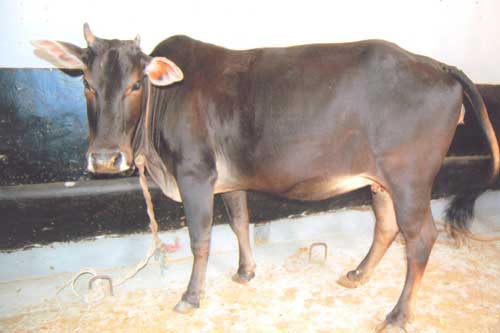
Badri Cow
In Uttarakhand State, there are 20.06 lakhs cattle, 9.87 lakhs buffaloes, 3.68 lakhs sheep, 13.67 lakhs goats, 19,900 pigs, 44000 equines and 46.41 lakhs poultry, which forms base for livestock farming system. Small and uneconomical land holdings in the state are over 70 per cent. These are rainfed and coupled with the vagaries of the monsoons. In such conditions, it is animal farming that provides stability to agriculture and family. In the context of hill development, animal based enterprises are the most suited activities. Animals are “walking food factories” converting crop residues, grasses etc into food like milk and meat, “powerhouses” producing vast amount of energy for agriculture, cooking and transportation and ‘fertilizer factories’ providing enormous amount of organic manure. Besides, indigenous hill cow (Badri Cow) is considered as pharmaceutical factory as its Panchganga products are considered as one of the best to treat human ailments. Thus, animals are “Daily income providers” and may be treated as ‘Vast employment providing co.’ particularly for poor hill people, who are having very limited resources at their disposal to survive in the adverse climatic conditions.Cows are considered very sacred in Indian culture possibly due to the fact that they are environment friendly and important for sustaining human life. The cow is vegetarian and provides every bit of itself to support human life; milk, dung, urine, skin, horn, hooves, etc. Bos Indicus or Zebu cattle breeds which are the humped cattle, found in the Indian sub-continent are thought to be the world’s oldest domesticated cattle. Cow has been a cornerstone of Indian agriculture for centuries and has served as source of nutrition for farmer’s families through milk and milk products, as well as providing draught animal power for both agricultural operations such as ploughing and tilling the land, as well as for transportation of goods. Nearly all basic necessities of life were woven around the cow, with contributions in all aspects of life, including farming and manure, food and nourishment, transport, fuel (burning of dried cow dung cakes and medicinal usage of cow dung and cow urine. Rearing of cattle is an enterprise, which enables poor and landless farmers to earn income using common-property resources and land that has no other sustainable agricultural use. The cattle and other livestock are fed on crop residues and agricultural farm produce and by-products that would otherwise be wasted. Cattle products are an important source of nutrients, and the addition of milk to the diet provides protein, calcium, vitamins, and other nutrients that would otherwise be lacking. Besides providing food, cattle form the most important form of non-human power available to poor farmers. But when cow becomes dry means does not give milk then its maintenance is turned uneconomical to the owners and most of the time they leave the cows in forest or on streets. If even such cows are kept and maintained on bare minimum feed and fodder, these can be turned into the profitable business model through the utilization of their urine and dung for preparation of various useful products.
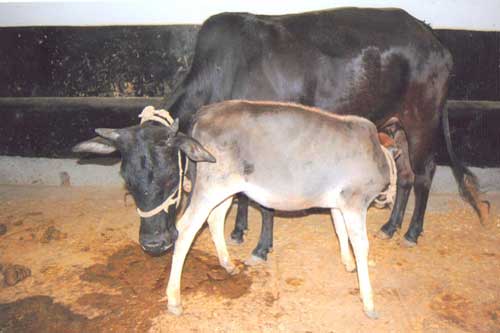
Importance of cow urine
Cow urine has many beneficial properties particularly in the area of agriculture and therapeutics. It has also been observed in scientific research that the urine of Indian cows is highly effective as compare to the urine of other species. It is a good biopesticide and also effective against many diseases including cancer. It is a very potent immunoenhancer. In ‘Sushruta Samhita’ and Ashtanga Sangraha’ cow urine has been described as the most effective substance/secretion of animal origin with innumerable therapeutic values. Urine of cow contains all the beneficial elements, so it is natural and universal medicine that fulfills the deficiency of the elements in the body. Cow urine contains 24 types of salts and the medicines made from cow urine are capable of curing even the most incurable diseases. Cow urine contains 95% water, 2.5% urea, and 2.5% minerals, salts, hormones and enzymes. It contains iron, calcium, phosphorus, salts, carbonic acid, potash, nitrogen, ammonia, manganese, Sulphur, phosphate, potassium, urea, uric acid, amino acids, enzymes, cytokines, lactose etc. Cytokines and amino acids may play a role in immunoenhancement.
Immunomodulatory properties of cow urine distillate in mice recorded an increase in humoral and cellular immunity of 45% and 59%, respectively. The parameters used to assess immunity were B-lymphocyte blastogenesis, T-lymphocyte blastogenesis, serum IgG and IgM levels. The cow urine also stimulated the production of interleukin 1 and 2 by 16% and 21%, respectively, from peripheral blood leucocytes of mice. The phagocytic activity of macrophages was enhanced by 104% in mice treated with cow urine in comparison to controls. Panchgavya is considered as a wonder formulation which requires scientific validation using modern biotechnological tools in order to increase its acceptance in the society. The cow urine distillate was also found to be a good immunostimulant in comparison to Vasant Kusmakar in mice. The cow urine was given orally to a female patient having intestinal cancer for a period of 4 months, and it provided relief to the patient by reducing the motions, hemorrhage and increased activity of the patient. Distilled cow urine has been found to increase the humoral immunity in rats. Lymphocytes proliferation in response to mitogen in the developing chick embryo increased with the use of cow urine. This means that immune system developed at an early stage and embryonic mortality can be decreased with the use of cow urine. Urine of red hill cow, found in Uttaranchal state and characterized as Badri cow has been found to be most potent immunostimulator as compared with the urine from other animals including indigenous cow (Sahiwal), goats, buffalo (Murah), cross bred cow (Sahiwal x Jerssey) and exotic cows (HF). It was observed that urine of cross bred, exotic cow and buffalo has no immunomodulatory effect. Cow urine given to the poultry birds in water as an alternative to antibiotics demonstrated excellent immunomodulatory properties in addition to the increase in the egg production and egg quality of the layer birds. In another important study effect of cow urine on the lymphocytes damaged by pesticides was observed. It was found that cow urine decreases the apoptosis caused by the heavy metals in avian lymphocytes. Thus, corroborating to some extent with the findings that cow urine helps in repair of broken DNA. The antioxidant properties of cow urine distillate includes protection or DNA and its repairs. The cow urine distillate protected the chromosomal aberrations caused by mitomycin-C in human leucocyte culture. Similarly, cow urine was found to be a very good antioxidant. Cow urine has a high antioxidant status as indicated by its ability to destroy the free radicals. If we look into the fact of apoptosis, it starts with fragmentation of nucleic acid (DNA) into oligonucleotides of 200-300 bp. Several studies carried out by the author and others at Pantnagar, IVRI Izatnagar, NEERI Nagpur and CIMAP Lucknow are suggestive of its properties to repair damaged DNA and thereby protecting cells from suicidal activity enhanced due to pesticides/any other harmful chemical residues.
Cow urine have been used for production of biofertilizer. Addition of cow’s urine in composting pits led to production of superior quality biofertilizer with higher concentrations of major macro- and micro-nutrients and was found to be superior in terms of useful microflora (fungi, bacteria and actinomycetes). Application of this biofertilizer in pots significantly improved the yields of Lucerne (Medicago sativa). Cow urine acts like a disinfectant and thus purifies atmosphere and improves the fertility of the land. Cow urine as such and/or after addition of neem leaves is a wonderful biopesticide. Such biopesticides are safe to use, do not accumulate in the food chain and as such do not have the harmful effects like chemical pesticides. In 10 liters of cattle urine, about 2 kg of Neem Leaves are soaked with some other vegetable matter and can be used in proportion of 1:50 for spraying. Cow dung mixed with cow urine makes excellent manure and a natural pesticide. Pest Repellent prepared from cow urine and Neem leaves exhibits excellent insecticidal, fungicidal and pesticidal properties and also exerts excellent plant growth promotion property
A cow urine distillate fraction has been identified as a bioenhancer of the activities of commonly used antibiotics, anti-fungal and anti-cancer drugs. The activity of Rifampicin, a front-line anti-tubercular drug used against tuberculosis, increases by about 5-7 folds against E. coli and 3-11 folds against Gram-positive bacteria. Potency of ‘Taxol’ (paclitaxel) has been observed to get increase against MCF-7, a human breast cancer cell line in in-vitro assays (US Patent No. 6,410,059). Bioenhancers are substances, which do not possess drug activity of their own but promote and augment the bioactivity or bioavailability or the uptake of drugs in combination therapy. Such bioenhancers have been earlier isolated only from plant sources. It has been found that cow urine also act as a bioenhancer and increases the efficacy of the antibiotics against infectious agents. Bio enhancement has also been observed with other drugs viz. Ampicillin, Isoniazid, Clotrimazole, Cyanocobalamine etc. Bioenhancer activity has been found to reduce the antibiotic dose per day and duration of treatment in tuberculosis patients.
Cow urine possesses anti-cancer properties. Research works revealed the beneficial properties of cow urine in the treatment of cancers. The Indigenous cow urine contains “Rasayan” tatva, which is responsible to modulate immune system and act as bioenhancer. Scientists have proved that the pesticides even at very low doses cause apoptosis (cell suicide) in lymphocytes of blood and tissues through fragmentation of DNA. Cow urine helps the lymphocytes to survive and not to commit suicide. It also repairs the damaged DNA and thus is effective for the cancer therapy. Pathogenic effect of free radicals can be neutralized through cow urine therapy. These radicals cause damage to various tissues and attack enzymes, fat and proteins disrupting normal cell activities or cell membranes, producing a chain reaction of destruction leading to the ageing process of a person. By regular use of cow urine one can get the charm of a youth as it prevents the free radicals formation. For the treatment of wounds on body surface local (topical) application of antiseptic powder or lotion is recommended but in ancient Hindu mythology use of cow urine as antiseptic is found. The cow urine is having antiseptic properties in wound healing and that the healing times is somewhat less in comparison to wounds on which antiseptic cream was applied. Administration of fresh cow urine orally showed added effect on wound healing by virtue of its antiseptic and immunologically modifying properties in dogs, the healing process was observed a bit faster than the group of dogs which were not given fresh cow urine orally. The urine of indigenous cow is also compared with the urine of other animals such as crossbred cows, buffaloes, goats, exotic cows and hill cows. It has been observed that the urine of indigenous and Badri cows is quite effective as far as the immunomodulation is concerned.
COW DUNG
Cow dung has been considered as a Gold Mine due its wide applications in the field of agriculture, energy resource, environmental protection and therapeutic applications. Dung as fuel is well known for rural kitchen. Cow dung patties (gootte) are used for cooking. Roasting of potato, sweet potato in it is still considered the best fuel as against electric oven. Traditional wisdom says that in burning of these cow dung cakes, the temperature never rises beyond a certain point, ensuring overheating does not destroy the nutrients in the food. Besides, the smoke of gobar clears the air from germs. Gobar has also been successfully used to produce bio-gas (methane) and generate electricity for consumer use. Biogas is used in cooking, for lighting in homes and streets. It can be used for driving self-combustion engines for various uses like running a generator to produce electricity. The slurry (residue) could also be used for production of manure, which when spread on crops acts as an excellent fertilizer. Dung for Bio-gas and its slurry for manure is providing renewable cooking energy and slurry for compost. Cow dung is the best fertilizer. Composting makes it even more powerful fertilizer. It is rich in nitrogen. Different types of bio-fertilizers using cow dung and urine and vegetative waste have been developed using compost method and vermiculture.
With use of 1 kg of cow dung with 15/16 kg of Biomas and similar quantity of soil from the fields, 30 kg of good compost is made. This is also approved by National Bank for Agriculture and Rural Development (NABARD). Vermi Compost from cow’s dung exhibits excellent plant growth promotion property.
Panchgavya spray has been found effective on all the crops under evaluation than the foliar spray of recommended nutrients and growth regulators and found advantageous since it recorded higher growth and productivity than with no Panchgavya spray. Degraded soil is improved by layer of soil and bio-mass with sprinkling of fresh dung slurry for composting. Cow dung along with sea water and yeast has been exploited as a liquid catalyst. It is claimed that it is capable of greening degraded land. Not only good compost is made but valuable organisms like earthworms are also generated as in due course which keep on working all through. Individually or system as a whole, biogas slurry with Panchgavya combination is adjudged as the best organic nutritional practice for the sustainability of crops by positive impacts on overall performance on growth, productivity and quality of crops, the soil health and economics. Modern day ecologists are saying that as compared to chemical fertilizer, which damages the land in the long run, cow dung actually improves the health of the soil. Covering seeds in dung before planting helps to protect against pests. It is an excellent conditioner for the soil.
Mixed with mud and water serves to coat the floors and walls in mud houses. As a mud additive it dries up slippery mud puddles and improves water absorption of mud. Anti-septic property is also the attribute of cow dung, which is mixed with clay to form a plastering medium for mud huts. Thin coating of dung for cooking place, havan kund, havan platform, mud house, floors, walls provide antiseptic surface. Mud and cow dung ashes become like cement, by improved resistance to disintegration. It is a proven fact that mud huts plastered with cow dung keep insects and reptiles away. This is the reason why people in the countryside still store grain in huge earthen pots plastered with cow dung and urine to keep it free from insect manifestations. Smoldering cow patties keep away mosquitoes. Apparently, the traditional Indian village system of wiping the floor daily with a mixture of water and fresh cow dung assures that flies will not settle there. Cow dung is naturally hot and compost makes it hotter. It can be put in glass house to warm them or run pipes through it to get hot water. Pots can be cleaned using cow dung in the same way one uses brass polish or soap. It absorbs oil and fat. Dung ash is a very good cleaning agent for utensils and can avoid use of chemicals like vim, which leave residual effect.
Cow dung from a single cow in its life span can produce 4500 liters of biogas which is equivalent to burning 6,80,00,000 tons of wood. This will help us save 14 crore trees from cutting and burning and thus give environment protection. Fertilizers from cow dung acts as effective pollution controllers for soil, water and air. Scientific studies show that gobar has been found to be resistant to solar radiation. Experts say that pyramid shaped hump of cow absorbs solar energy. Press reports have appeared mentioning that houses coated with cow dung plaster are saved from Nuclear radiation i.e. get protected from atomic emissions. Our own Nuclear Department should experiment in their laboratories for the scientific facts. Dung, when sprayed on garbage and waste dump, within a few hours makes these free from all foul odors and even flies are not attracted. Experiments are being made near Indore to fill cattle horns (of dead animals) with dung. These are buried underground before winter and in autumn they are taken out. 25/30 gms of this enriched dung is mixed with 10 liters of rain water and sprayed which gives good result in agriculture particularly in organic farming. Cow dung mixed with crushed neem leaves and smeared on skin is good for boils and heat rashes.
Cow was the central focal point of Indian agriculture 60 years ago and will remain at same stage after the bad experience of chemical farming. In order to establish the cow based organic farming and health system, a model is given as under which can provide a win-win situation to farmer/ animal owner, small scale industry/ rural based industry, marketing and management company. With a bare minimum investment, one can start it as an individual or as a co-operative with 10-20 like-minded people and advantages of various government schemes like startups. Here are some modules given as under in a tabular form with diagrammatic presentation of the products.
Table:1 Various levels of rural development through Badri cow model
| Level-1: Village | Level-2: Block | Level-3: District | |
| Total expenditure (Rs.) | 50,000 | 200,000 | 10,00,000 |
| Capital investment | – | 100,000 | 7,00,000 |
| Income monthly (Rs.) | 5,000 – 10,000 | 15,000 – 20,000 | 25000 – 1.0 lacs |
| Manpower | One/ Two | 4 – 5 | 5 – 10 |
| Employment | 10 – 20 | 25 – 30 | 40 – 50 |

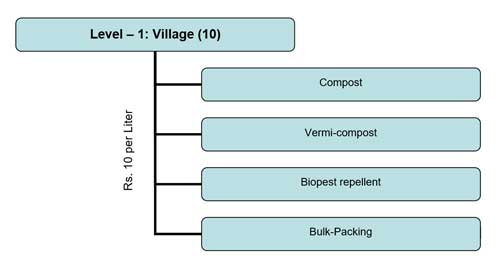

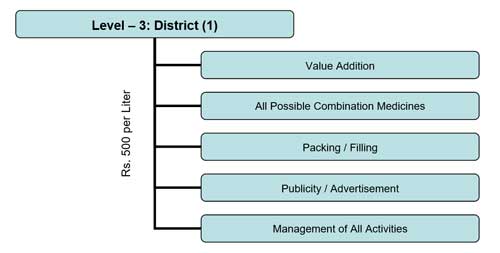
On successful implementation of this model as a pilot project, the same can be applied in each village and block in order to develop the Cowpathy/ Panchgavya cooperatives at each district which will provide employment to rural youths and helpful in removal of poverty from rural Uttarakhand.
Outcome
- It will promote the organic farming in a scientific way without any loss in production and developing new high value added and prime products on remunerative price.
- It will enhance the farmer’s income more than double as also envisaged by the Prime Minister of India.
- It will generate employment opportunities for rural youth at local level and hence will be beneficial in containing the migration from rural areas to urban cities reducing the population load in cities.
- People will get organically developed food items which will be beneficial to their health and to get rid of chemical pesticides and fertilizer’s induced adverse pathological reactions.
- It will reduce the dependence of farmers on chemical pesticides and fertilizers.
- The expenditure on agriculture will get reduced to bare minimum as most of the inputs of agriculture farming will be made available at local level.
- It will reduce the load on allopathic medicines to maintain the heath of people as on consumption of organic food products their immunity may become to an optimum level.
- It will reduce burden of loan on the farmers and thereby decrease the number of suicide cases. It has also been observed in many states that farmers rearing cows along with agriculture farming are less liable to attempt suicide.
- It will reduce the load of chemicals in the environment and thus decrease the environmental pollution.
- It will generate the reverse migration from urban areas and may promote the cow tourism, natural therapy and utilization of locally developed products not only for agriculture but also for human and animal health.
Short comings
- The number of indigenous cows is reducing day by day; in such situation their procurement, maintenance and reproduction will a great challenging task.
- Marketing of organic products and biopesticides/ biofertilizers will face difficulty initially as the facility for this needs to develop at local as well as in metro cities.
- Awareness programmes for general people needs to be reoriented for organic products.
- A prompt and responsible supply chain needs to be developed from distant areas to the central level in order to save the perishable items.
Future prospects
Cow products have immense potential of being used in organic farming sector to produce healthy food and value-added products. Particularly cow urine can be developed in such a manner that can be used along with antibiotics and/or vaccines in order to enhance their activity. However, its palatability in crude form as it is being prepared and marketed by several organizations, is not much accepted in the society. Therefore, the efforts are being made to prepare the dry form of cow urine without losing its activity but changing the delivery system. Another area is to study the urine of Indigenous cows of different breeds in various geoclimatic zones at different nutrition levels. In future, it can be given as a ‘bioenhancer and Bioprotective material’ to protect man and animals from various diseases.
Further Readings
- Ambwani S, Ambwani Tanuj Kumar and Chauhan RS (2014) Counteracting effects of cow urine on allethrin induced immunotoxicity and oxidative stress in chicken lymphocytes culture system. Journal of Immunology and Immunopathology.16: 58-63.
- Ambwani S, Ambwani TK and Chauhan RS (2018) Ameliorating effects of Badri cow urine on cypermethrin induced immunotoxicity and oxidative stress in chicken lymphocyte culture system. Biosciences Biotechnology Research Asia.15 (3): 1-12.
- Ambwani S, Sharma R, Ambwani M, Rawat S and Chauhan RS (2018) Role of Immunosensors for Improved Animal Health Management. SF J Anal Biochem 1(2):1-12.
- Chauhan RS and Singh GK. 2001. Immunomodulation: An overview. Journal of Immunology and Immunopathology, 3(2): 1-15.
- Chauhan RS and Singh GK. 2013. Immunopathology of A1 beta casein cow milk in man and animals. Journal of Immunology and Immunopathology, 15:201-209.
- Chauhan RS and Singh GK.2016. Smart Veterinary Practices: A 2020 Agenda. In: Souvenir on the occasion of XXX convocation. 17th November, 2016. GB Pant University of Agri. & Tech. Pantnagar (Uttarakhand). Pp 57-61.
- Chauhan RS, Singh BP and Singhal LK. 2001. Immunomodulation with Kamdhenu ark in mice. Journal of Immunology and Immunopathology, 3: 74-77.
- Chauhan RS, Singh DD, Singhal LK and Kumar R. 2004. Effect of cow urine on Interleukin-1 and 2. Journal of Immunology and Immunopathology, 6(S-1): 38-39.
- Chauhan RS. 2001. Efficacy of herbal immuplus in enhancing humoral and cell mediated immunity in dogs. Livestock International. 5: 12-18.
- Chauhan RS. 2002. Panchgavya: A wonder medicine from indigenous cow. Pashudhan, 17: 5-7.
- Chauhan RS. 2002. Scientific validation of cow therapy: Past, present and future. In: Vishwa Ayurveda Sammelan, September 6-8, 2002, New Delhi.
- Chauhan RS. 2004. Panchgavya Therapy (Cowpathy): Current status and future directions. Indian Cow, 1: 3-7.
- Chauhan RS. 2005. Cowpathy (Panchgavya Therapy) and immunomodulation. In: Use of alternative systems of medicine (Ayurvedic and Homeopathic) in veterinary practice. (Eds. VM Bhuktar, SS Rautmare, RG Bambal and AM Kulkarni). Nagpur. pp 54-57.
- Chauhan RS. 2006. Cowpathy induced immunomodulation. In: Immunology in Health and Disease. (Eds. MK Agarwal and SK Awasthi). CSJM University, Kanpur. pp 176-179.
- Chauhan RS. Indigenous cow urine and Immunomodulation. Journal of Immunology & Immunopathology. 15:19-22.
- Chauhan RS. 2018. Illustrated Textbook of Veterinary Pathology. Brillion Publishing, New Delhi. pp 868.
- Chauhan RS. 2017. Cowpathy : A new version of ancient science. ICAR NEWS, 23 (4): 4-5.
- Chauhan, RS . 2020. Research on Panchgavya- Current status and future directions. In: National Seminar on Panchgavya for Health Care – A Potential area for Pharmaceutical Research, held on 8-9 Feb 2020 at Anurag College of Pharmacy, Nagpur.
- Dhama K, Chauhan RS and Singhal Lokesh. 2005. Anti-cancer activity of cow urine: Current status and future directions. International Journal of Cow Science, 1(2): 1-25.
- Dhama K, Khurana SK, Karthik K, Tiwari R, Malik YPS and Chauhan RS. 2014. Panchgvya: Immune-enhancing and Therapeutic Perspectives. Journal of Immunology and Immunopathology,16: 1-11.
- Dhama K, Rathore R, Chauhan RS and Tomar S. 2005. Panchgavya (Cowpathy): An overview. International Journal of Cow Science, 1(1): 1-15.
- Garg N, Kumar A and Chauhan RS. 2005. Effect of Indigenous cow urine on nutrient utilization of white leghorn layers. International Journal of Cow Science, 1(1): 36-38.
- Joshi A and Chauhan RS. 2013. Evaluation of Anticancer properties of Taxus baccata and Badri cow urine in mice: Clinicoheamatological study. International Journal of Advance research. 1 (5):71-78.
- Kumar P, Singh GK, Chauhan RS and Singh DD. 2004. Effect of cow urine on lymphocyte proliferation in developing stages of chicks. The Indian Cow, 1(2): 3.5.
- Kumar R, Chauhan RS, Singhal LK, Singh AK and Singh DD. 2002. A comparative study on immunostimulatory effects of Kamdhenu Ark and Vasant Kusumakar in mice. Journal of Immunology and Immunopathology, 4(1&2): 104-106.
- Singh Harpal, Sharma VK and Chauhan RS. 2001. Herbal preparations and biostimulators in tissue repair. Monograph. College of Veterinary Sciences. G.B. Pant Univ. Pantnagar 48.pp
- Tamrakar V, Raina Manveen, Rathor DPS, Joshi Ankita and Chauhan RS. 2015. Comparative analysis of serum biochemical of Sahiwal, Badri, cross-bred and Tulsi cows. Journal of Immunology and Immunopathology.17: 86-91.


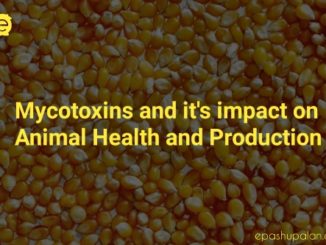

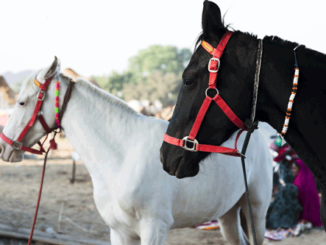

Good information sir!!
Good information sir